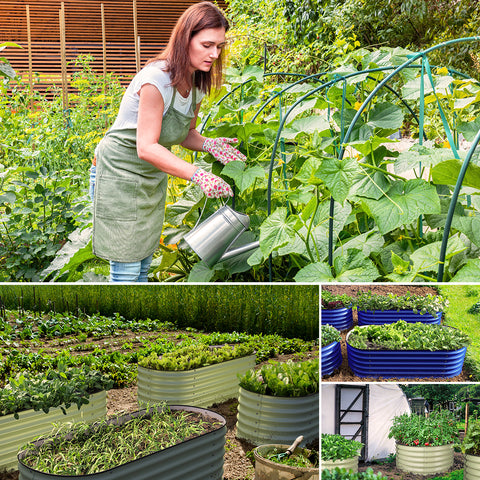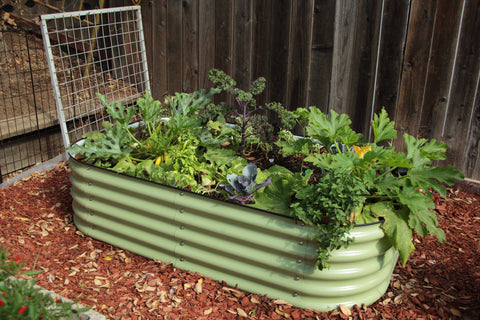Tips from Olle Garden Bed: A Guide to Growing Strawberries at Home
Strawberries are one of the most popular fruits among family gardeners. As one of the easiest fruits to grow, they are also rich in nutrients - vitamin C, fiber and antioxidants. Although fresh strawberries can be bought at grocery stores in spring and summer, nothing is better than eating fresh strawberries in your garden. These compact plants can be grown in garden beds, containers, and baskets. Even gardeners with limited space can add these delicious fruits to their yard, courtyard or apartment balcony.
Basics
Plant name:strawberry
Area:3 to 10, depending on the variety; It is recommended to cover Zone 3 and Zone 4 in winter.
Height/spread:Low hills, dense, creeping habit, 6 to 16 inches high, 12 to 24 inches wide; Runners can reach 40 inches long.
expose:Sufficient sunshine
Flowering time:Spring to autumn
Color and characteristics:The leaves are trifid, green, with dentate edges. The florets are usually white, sometimes red or pink, with yellow pistils and stamens. Berries are usually red, but there are also orange red and yellow berries
Color or white. The fruit is sweet and delicious.
Plant life:Depends on the variety; With proper care, most strawberries can grow for 3 to 4 years. New plants are produced through viningingrunners.

Toxicity:
All parts of the strawberry plant are safe for pets. If your pets like the taste of fruit, please limit their intake to avoid excessive sugar intake.
Type: It is important to understand the different types of strawberries in order to choose the best for your garden.
June bearing: the most common; Large berries are produced in June.
Endless: It is not really endless. Production of two main crops: late spring and late summer to early autumn. The fruit is slightly smaller than that in June.
Day neutral: the continuous yield and fruit are small throughout the growth season (from late spring to frost).
Alpine: small but full-bodied berries; Perennial or diurnal neutral varieties.
Wild: A berry with superior flavor, native to North America.
Ornamental: It grows mainly for observing leaves, and the fruit is insignificant.
Learn more about different types of strawberries.
How long does it take for strawberries to grow?
It takes about 2 months for an existing plant to grow completely from dormancy. It takes about six months for plants to grow from seeds. Different types of strawberry plants will
Fruits are produced at different intervals of time - some as early as June, others throughout the summer to early autumn (see above type). In a warm climate, plants should begin to blossom in early spring. Once the flower is
The pollinator shall apply fertilizer, and the berries shall mature in about 30 days.
How to plant strawberries
Strawberries can be grown on garden beds, garden beds or on larger plots. They can also be grown in baskets, containers, window frames and strawberry pots. Strawberries can be grown from starter plants, bare roots, or seeds
When to plant strawberries:
Planting in spring (from mid April to mid May). Wait until the soil is dry enough to work and the temperature is above 40 degrees Fahrenheit.
Strawberry planting location:
Select a sunny, fertile and well drained soil, and keep it evenly moist. Do not plant strawberries on beds where tomatoes, peppers or potatoes have recently been planted - the soil may contain potentially harmful
Pathogens that damage new plants.

Planting on the garden beds:
Loosen the soil to a depth of 12 inches and add a lot of organic matter to the planting site. Dig a hole large enough, do not bend the root and place the plant, so that the midpoint of the crown is at the soil level. Put the root slightly
Slightly unfold and fill the hole with soil; well. Cover the plant with fresh straw to keep the fruit away from the ground; This will help prevent decay and slug damage and keep strawberry beds free of weeds. Strawberry bracket
It can be used to keep berries on the ground and prevent them from rotting.
Mattedrowsystem: It is most commonly used for June varieties, with plant spacing of 18 to 24 inches and row spacing of 3 feet. This provides space for runners from the second year to build new factories.
Mountain method: It is most commonly used for perennial and diurnal strawberries. The soil is piled into 8 inch high and 24 inch wide hilly rows, as long as needed. Plants are spaced 12 inches apart on the mountain and arranged in two interlaced rows.
Runners are trapped and are not allowed to set new plants.
Planting strawberries in containers:
Use a high-quality potting mixture and plant the same plants as the bed. The flowerpot needs good drainage. Plants should be spaced 10 to 12 inches apart. These will require more water and fertilizer than underground plants. grass
Berries can be grown in traditional or vertical or stacked pots.
Planting strawberries indoors:
Strawberries can be grown indoors, but this is only recommended for experienced gardeners. Plants need artificial lighting and artificial pollination to successfully produce berries.
Strawberry planting by hydroponics:
Experienced gardeners may want to try hydroponics to grow strawberries. Plants grow in nutrient rich water, not soil. This method can be used indoors and can produce fruit all year round.
Strawberry associated plants:
Good companion plants include borage, coriander and bush beans. Don't plant strawberries near cabbage vegetables such as broccoli, cauliflower, or kale, as they can hinder growth.
Strawberry plant care
Soil:
Strawberries like to use compost or other organic substances to improve the fertile soil. The soil should be slightly acidic, with a pH between 5.5 and 6.8 (6.2 is ideal). Clay with poor drainage will
Cause root rot.
Correction and fertilizer:
After several weeks of planting, apply 10-10-10 fertilizer according to the packaging instructions. For mature June plants, fertilize after harvest. Daytime neutral and immortal types can be fertilized after the second berry crop, but no later than September.

Watering:
Strawberries have shallow roots about 6 inches deep, so regular watering is essential, especially during fruit development, to promote larger, more juicy berries. Plants need about 1 to 1-1/2 inches per week
Inches of water.
Trim:
Strawberries produce runners, which are slender vine branches growing from the crown of trees. Remove runners in the first year to recharge the plant with energy. Allow runners to plant and develop new plants in the second or third year
Plants so that they can replace older non productive plants.
Slimming and rejuvenation:
From the second year, cut or trim June bearing types 2 to 4 inches from the ground immediately after harvest, and then apply fertilizer to promote new growth. Thin enough to allow 4 to 6 inches between plants. For all
Type that allows runners to create new plants and remove older unproductive plants in the second or third year.
harvest:
Harvest when the fruit is fully colored and fruity; Don't let it become too ripe, because the fruit will become mushy or moldy. Use immediately after harvest or remove the leaf core and freeze it for later use.
Diseases and pests:
Diseases include fruit rot, mold, leaf spot, leaf blight, verticillium wilt, gray mold, anthracnose, powdery mildew and root rot. Pests include slugs, snails, spider mites, cutting insects, aphids, whiteflies, and elephant trunks
Worms or grubs.
Deer resistance:
All parts of the strawberry plant appeal to deer. Protect the plants when necessary. If your plants have been grazed, please be sure to wash the berries, because deer can transmit E. coli and other diseases.
How to choose the right strawberry plant
For edible plots and garden beds:
Garden and mountain types are most suitable.
For slopes and hillsides:
Alpine and ornamental strawberries are excellent ground coverings that help prevent erosion. If you plan to harvest berries, be sure to leave the area where you can tread.
For containers:
Alpine and other smaller varieties are the best, but if there is enough space and nutrition, any variety can be planted in containers. Because water and fertilizer can seep out quickly, plants need to shut down more frequently
There are hundreds of strawberry varieties that vary from region to region, so it's better to choose a variety that performs well in your place